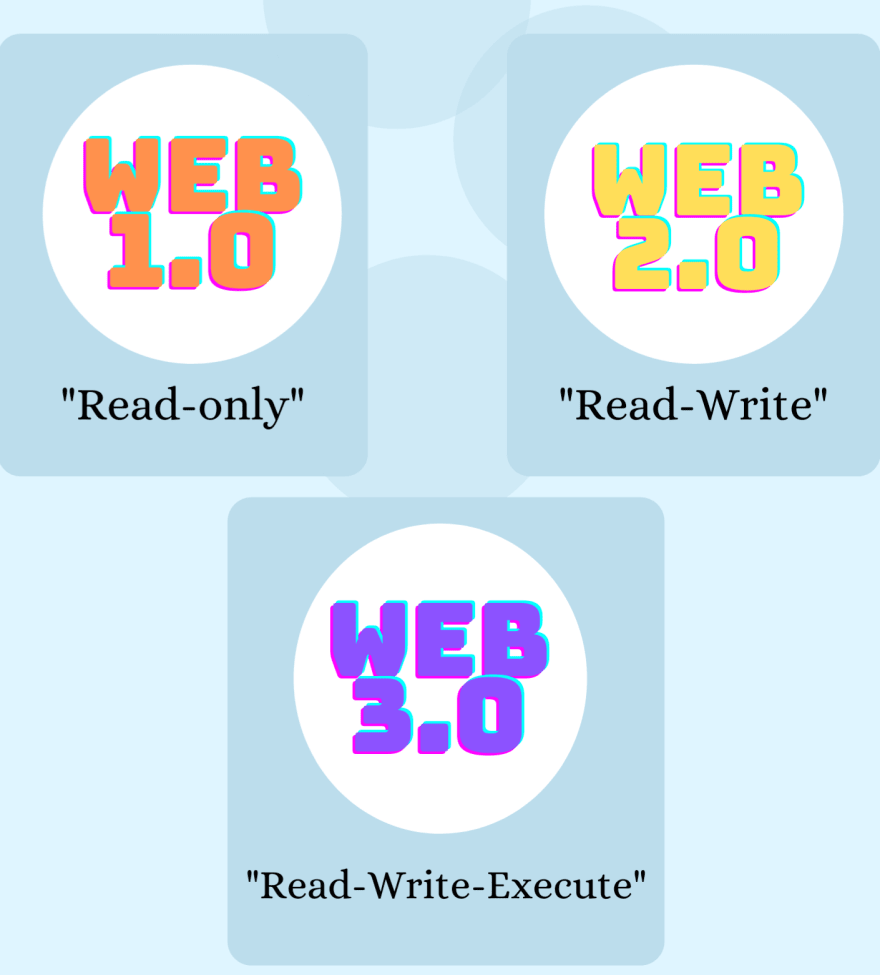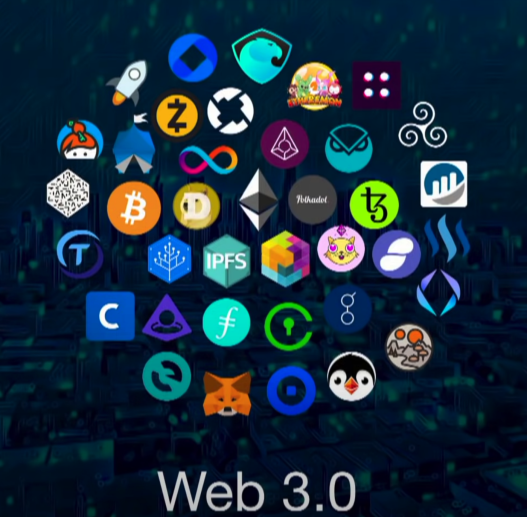Web 3.0.
Ever wondered when you search for a particular service or a product on Google and after sometime advertisements start popping up on all your social media pages and accounts, this happens because of web 2.0. It all started when web 1.0 was introduced to the internet, which was basically all read only content, similar to a Wikipedia page. Web 2.0 made internet more interactive because of developments in web technologies, which helped companies to create interactive web platforms. When we search for data or a product over the web, we unknowingly provide it with information related to our choices and interests which are stored in cookies ,which later are sold to various companies who make use of this data to advertise exactly what we want, so this is how we are able to see ads of the products we searched for.

Web 3.0 is the third generation of the internet, and is marked by the development of new technologies and services that take advantage of the internet’s ever-evolving capabilities. It is characterized by a move away from the centralized, server-driven structure of Web 2.0 towards a more distributed, decentralized approach. In Web 3.0, the user takes an active role in navigating the web and in managing their personal data. This is enabled by advances in technology such as cloud computing, artificial intelligence, blockchain, and the “Internet of Things”.
In Web 3.0, cloud computing allows for data to be stored and accessed from remote servers rather than from a user’s local computer, allowing for more secure data storage and faster access to information. Artificial intelligence allows for advanced applications of computing that can automate processes, provide more precise and personalized data, and analyze vast amounts of data for insights. Blockchain technology enables the secure and transparent transfer of information without the need for a central authority. And the “Internet of Things”, or IoT, enables devices to be connected to the internet, allowing for the efficient collection and sharing of data. While the exact definition of Web 3.0 is still somewhat open to debate, it is generally thought to represent a significant shift in the way that the web is used and experienced.

Blockchain: This is a decentralized, distributed ledger technology that enables secure and transparent transactions without the need for a central authority.
Smart Contracts: These are self-executing contracts with the terms of the agreement written into code that can be stored and replicated on the blockchain.
Decentralized Storage: This refers to the use of distributed systems, such as IPFS, to store data in a decentralized manner, rather than relying on centralized servers.
Decentralized Identity: This refers to the use of decentralized systems, such as the DID (Decentralized Identifier) protocol, to give individuals more control over their digital identities.
Decentralized Finance: This refers to the use of blockchain technology to create decentralized financial systems, such as decentralized exchanges and lending platforms.
Decentralized Web: This refers to the use of technologies like IPFS, dat and OrbitDB to create a web of peer-to-peer connections that allows users to interact directly, without relying on centralized servers.
Cryptography: Understanding of various encryption techniques and how it can be applied in the web3.0 environment.
Keep in mind that web3.0 is still in its early stages and new technologies are emerging all the time. Therefore, it’s also important to stay up-to-date with new developments in the field.
